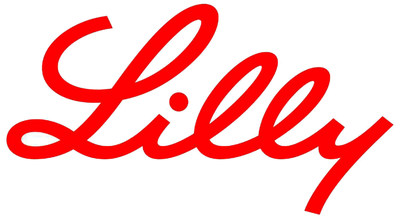SURPASS program has now met regulatory submission requirements for evaluating cardiovascular risk; Lilly intends to submit registration package to regulatory authorities by the end of 2021
- Highest dose of tirzepatide reduced A1C by 2.58 percent and body weight by 11.7 kg (25.8 lb., 13.0 percent)
- SURPASS program has now met regulatory submission requirements for evaluating cardiovascular risk; Lilly intends to submit registration package to regulatory authorities by the end of 2021
INDIANAPOLIS, May 20, 2021 /PRNewswire/ -- Tirzepatide led to superior A1C and body weight reductions from baseline across all three doses in adults with type 2 diabetes who have increased cardiovascular (CV) risk compared to titrated insulin glargine in topline results from Eli Lilly and Company‘s (NYSE: LLY) SURPASS-4 clinical trial. For the efficacy estimandi, the highest dose of tirzepatide led to an A1C reduction of 2.58 percent and reduced body weight by 11.7 kg (25.8 lb., 13.0 percent) compared to results for those treated with insulin glargine (A1C reduction of 1.44 percent and weight gain of 1.9 kg [4.2 lb., 2.2 percent]) at 52 weeks.
The overall safety profile of tirzepatide was consistent with the glucagon-like peptide-1 (GLP-1) receptor agonist class in this patient population. Gastrointestinal side effects were the most commonly reported adverse events, usually occurring during the escalation period and then decreasing over time.
SURPASS-4 is the largest and longest trial of the program to date and is the fifth and final global registration study for tirzepatide in type 2 diabetes to be completed. The study completion was driven by the accrual of major adverse cardiovascular events (MACE) in order to meet the regulatory submission requirements for evaluating CV risk for type 2 diabetes therapies. The primary endpoint was measured at 52 weeks, and many participants continued treatment beyond 52 weeks, some up to two years.
A CV safety meta-analysis was conducted across the clinical program once the predefined number of MACE events occurred. The meta-analysis consisted of 116 participants with adjudicated MACE-4, a composite endpoint of death from cardiovascular or undetermined causes, myocardial infarction, stroke and hospitalization for unstable angina. Comparing pooled tirzepatide versus pooled comparators, a hazard ratio of 0.81 (97.85% confidence interval [CI], 0.52 to 1.26) was attained. SURPASS-4 contributed the majority of the MACE-4 events for the CV safety meta-analysis, and within SURPASS-4, a hazard ratio of 0.74 (95% CI, 0.51 to 1.08) was observed. Lilly intends to submit the full registration package to regulatory authorities by the end of 2021.
Tirzepatide is a novel investigational once-weekly dual glucose-dependent insulinotropic polypeptide (GIP) and GLP-1 receptor agonist that integrates the actions of the GIP and GLP-1 incretins into a single molecule, representing a new class of medicines being studied for the treatment of type 2 diabetes.
“Tirzepatide delivered impressive results in this study, providing superior A1C reductions compared to insulin glargine – as well as the addition of significant weight loss – in people with type 2 diabetes who have increased cardiovascular risk,” said John Doupis, M.D., Ph.D., Director, Diabetes Division and Clinical Research Center, Iatriko Paleou Falirou Medical Center, Athens, Greece and Senior Investigator for SURPASS-4. “Type 2 diabetes is a complex condition that requires personalized approaches to treatment, and results from SURPASS-4 demonstrate the potential of tirzepatide to be an important option to help reduce A1C and weight for people with type 2 diabetes on one or up to three oral medicines.”
SURPASS-4 is an open-label global trial comparing the safety and efficacy of three tirzepatide doses (5 mg, 10 mg and 15 mg) to titrated insulin glargine in more than 2,000 people with type 2 diabetes who have increased CV risk and are treated with between one and three oral antihyperglycemic medicines (metformin, a sulfonylurea or an SGLT-2 inhibitor).
Study participants had a mean duration of diabetes of 11.8 years, a baseline A1C of 8.52 percent and a baseline weight of 90.3 kg. More than 85 percent of participants had a history of cardiovascular events. In the insulin glargine arm, the insulin dose was titrated following a treat-to-target algorithm with the goal of fasting blood glucose below 100 mg/dL. The starting dose of insulin glargine was 10 units per day, and the mean dose of insulin glargine at 52 weeks was 43 units per day.
SURPASS-4 achieved each of its primary and key secondary endpoints. All three doses of tirzepatide (5 mg, 10 mg and 15 mg) led to superior A1C and body weight reductions compared to insulin glargine for both estimandsii. At the highest dose of tirzepatide, 91 percent of participants achieved an A1C less than 7 percent – the American Diabetes Association’s recommended target for people with diabetes – and 43 percent achieved an A1C less than 5.7 percent – the level seen in people without diabetes.
Specifically, results at 52 weeks showed:
| Efficacy Estimand Results | ||||
| Tirzepatide | Tirzepatide 10 mg | Tirzepatide 15 mg | Insulin | |
| A1C reduction from | -2.24%* | -2.43%* | -2.58%* | -1.44% |
| Weight reduction from | -7.1 kg* (-8.1%) | -9.5 kg* (-10.7%) | -11.7 kg* (-13.0%) | +1.9 kg (+2.2%) |
| Percent of participants | 81.0%* | 88.2%* | 90.7%* | 50.7% |
| Percent of participants | 23.0%† | 32.7%† | 43.1%† | 3.4% |
| *Denotes statistical significance compared to insulin glargine | ||||
| †Not controlled for type I error | ||||
For the treatment-regimen estimandiii, all doses of tirzepatide led to superior A1C and body weight reductions compared to insulin glargine. Specifically, results showed:
- A1C reduction: -2.11% (5 mg), -2.30% (10 mg), -2.41% (15 mg), -1.39% (insulin glargine)
- Weight change: -6.4 kg (5 mg), -8.9 kg (10 mg), -10.6 kg (15 mg), +1.7 kg (insulin glargine)
- Percent of participants achieving A1C <7%: 75.1% (5 mg), 82.9% (10 mg), 84.9% (15 mg), 48.8% (insulin glargine)
Hypoglycemia less than 54 mg/dL at 52 weeks was reported in 6.7 percent (5 mg), 5.5 percent (10 mg) and 6.5 percent (15 mg) of participants in the tirzepatide arms and in 15.0 percent of participants in the insulin glargine arm. Episodes of hypoglycemia were seen more often in participants who had a background therapy of a sulfonylurea.
The most commonly reported adverse events in the tirzepatide arms at 52 weeks were gastrointestinal-related and generally mild to moderate in severity. For study participants treated with tirzepatide (5 mg, 10 mg and 15 mg, respectively), nausea (11.9 percent, 15.9 percent, 22.2 percent), diarrhea (12.2 percent, 19.5 percent, 20.4 percent) and vomiting (4.9 percent, 8.2 percent, 8.3 percent) were more frequently experienced compared to insulin glargine (1.6 percent [nausea], 3.2 percent [diarrhea], 1.1 percent [vomiting]). Treatment discontinuation rates due to adverse events at 52 weeks were 8.2 percent (tirzepatide 5 mg), 7.3 percent (tirzepatide 10 mg) and 8.9 percent (tirzepatide 15 mg), compared to 2.9 percent (insulin glargine).
“These strong results reinforce our belief that tirzepatide has the potential to be an exciting treatment for people living with type 2 diabetes,” said Mike Mason, president, Lilly Diabetes. “We look forward to meeting our goal of bringing an important new therapy to people living with this condition, including sharing more detailed results at scientific congresses and submitting to regulatory authorities later this year.”
The complete SURPASS-4 study data are being evaluated and additional results will be presented at the 57th Annual Meeting of the European Association for the Study of Diabetes and published in a peer-reviewed journal.
About tirzepatide
Tirzepatide is a once-weekly dual glucose-dependent insulinotropic polypeptide (GIP) and glucagon-like peptide-1 (GLP-1) receptor agonist that integrates the actions of both incretins into a single novel molecule. GIP is a hormone that may complement the effects of GLP-1 receptor agonists. In preclinical models, GIP has been shown to decrease food intake and increase energy expenditure therefore resulting in weight reductions, and when combined with a GLP-1 receptor agonist, may result in greater effects on glucose and body weight. Tirzepatide is in phase 3 development for blood glucose management in adults with type 2 diabetes and for chronic weight management. It is also being studied as potential treatments for non-alcoholic steatohepatitis (NASH) and heart failure with preserved ejection fraction (HFpEF).
About SURPASS-4 and the SURPASS clinical trial program
SURPASS-4 (NCT03730662) is a 52-week, randomized, parallel, open-label trial comparing the efficacy and safety of tirzepatide 5 mg, 10 mg and 15 mg to insulin glargine in adults with type 2 diabetes inadequately controlled with at least one and up to three oral antihyperglycemic medications (metformin, sulfonylureas or SGLT-2 inhibitors), who have increased cardiovascular (CV) risk. The trial randomized 2,002 study participants in a 1:1:1:3 ratio to receive either tirzepatide 5 mg, 10 mg or 15 mg or insulin glargine. Participants were located in the European Union, North America (Canada and the United States), Australia, Israel, Taiwan and Latin America (Brazil, Argentina and Mexico). The primary objective of the study was to demonstrate that tirzepatide (10 mg and/or 15 mg) is non-inferior to insulin glargine for change from baseline A1C at 52 weeks in people with type 2 diabetes and increased CV risk. The primary and key secondary endpoints were assessed at 52 weeks, with some participants continuing treatment for up to two years. Study participants had a mean A1C between 7.5 percent and 10.5 percent and a BMI greater than or equal to 25 kg/m2. All participants in the tirzepatide treatment arms started the study at a dose of tirzepatide 2.5 mg once-weekly and then increased the dose in a step-wise approach at four-week intervals to their final randomized maintenance dose of 5 mg (via a 2.5 mg step), 10 mg (via steps at 2.5 mg, 5 mg and 7.5 mg) or 15 mg (via steps at 2.5 mg, 5 mg, 7.5 mg, 10 mg and 12.5 mg). All participants in the titrated insulin glargine treatment arm started with a baseline dose of 10 units per day and titrated following a treat-to-target algorithm to reach a fasting blood glucose below 100 mg/dL.
The SURPASS phase 3 global clinical development program for tirzepatide has enrolled more than 13,000 people with type 2 diabetes across 10 clinical trials, five of which are global registration studies. The program began in late 2018, and all five global registration trials have been completed.
About Diabetes
Approximately 34 million people in the U.S.1 (just over 1 in 10) and an estimated 463 million adults worldwide2 have diabetes. Type 2 diabetes is the most common type internationally, accounting for an estimated 90 to 95 percent of all diabetes cases in the United States alone1. Diabetes is a chronic disease that occurs when the body does not properly produce or use the hormone insulin.
About Lilly Diabetes
Lilly has been a global leader in diabetes care since 1923, when we introduced the world’s first commercial insulin. Today we are building upon this heritage by working to meet the diverse needs of people with diabetes and those who care for them. Through research, collaboration and quality manufacturing we strive to make life better for people affected by diabetes and related conditions. We work to deliver breakthrough outcomes through innovative solutions—from medicines and technologies to support programs and more. For the latest updates, visit http://www.lillydiabetes.com/ or follow us on Twitter: @LillyDiabetes and Facebook: LillyDiabetesUS.
About Eli Lilly and Company
Lilly is a global healthcare leader that unites caring with discovery to make life better for people around the world. We were founded more than a century ago by a man committed to creating high-quality medicines that meet real needs, and today we remain true to that mission in all our work. Across the globe, Lilly employees work to discover and bring life-changing medicines to those who need them, improve the understanding and management of disease, and give back to communities through philanthropy and volunteerism. To learn more about Lilly, please visit us at lilly.com and lilly.com/newsroom. P-LLY
Lilly Cautionary Statement Regarding Forward-Looking Statements
This press release contains forward-looking statements (as that term is defined in the Private Securities Litigation Reform Act of 1995) about tirzepatide as a potential treatment for people with type 2 diabetes and the timeline for future data releases, presentations and other milestones relating to tirzepatide and its clinical trials and reflects Lilly’s current belief and expectations. However, as with any pharmaceutical product, there are substantial risks and uncertainties in the process of research, development, and commercialization. Among other things, there can be no guarantee that the studies will be completed as planned, that future study results will be consistent with the results to date or that tirzepatide will receive regulatory approvals. For further discussion of these and other risks and uncertainties, see Lilly’s most recent Form 10-K and Form 10-Q filings with the United States Securities and Exchange Commission. Except as required by law, Lilly undertakes no duty to update forward-looking statements to reflect events after the date of this release.
1 Centers for Disease Control and Prevention. National Diabetes Statistics Report, 2020. Atlanta, GA: Centers for Disease Control and Prevention, U.S. Dept. of Health and Human Services; 2020.
2 International Diabetes Federation. IDF Diabetes Atlas, 9th edn. Brussels, Belgium: International Diabetes Federation, 2019. Available at: http://diabetesatlas.org.
i Efficacy estimand used when the treatment effect prior to discontinuation of study drug or initiating rescue therapy for persistent severe hyperglycemia, is of interest.
ii Treatment differences for two estimands – efficacy and treatment-regimen – were evaluated for three tirzepatide doses (5 mg, 10 mg and 15 mg) compared to insulin glargine.
iii Treatment-regimen estimand used when the treatment effect irrespective of adherence to the investigational medicine or introduction of rescue therapy for persistent severe hyperglycemia, is of interest.
| Refer to: | Maggie Pfeiffer; monson_maggie@lilly.com; 317-650-5939 (Media) |
| Kevin Hern; hern_kevin_r@lilly.com; 317-277-1838 (Investors) |
![]() View original content to download multimedia:http://www.prnewswire.com/news-releases/lillys-tirzepatide-achieves-all-primary-and-key-secondary-study-outcomes-against-insulin-glargine-in-adults-with-type-2-diabetes-and-increased-cardiovascular-risk-in-surpass-4-trial-301295524.html
View original content to download multimedia:http://www.prnewswire.com/news-releases/lillys-tirzepatide-achieves-all-primary-and-key-secondary-study-outcomes-against-insulin-glargine-in-adults-with-type-2-diabetes-and-increased-cardiovascular-risk-in-surpass-4-trial-301295524.html
SOURCE Eli Lilly & Company
Company Codes: NYSE:LLY





